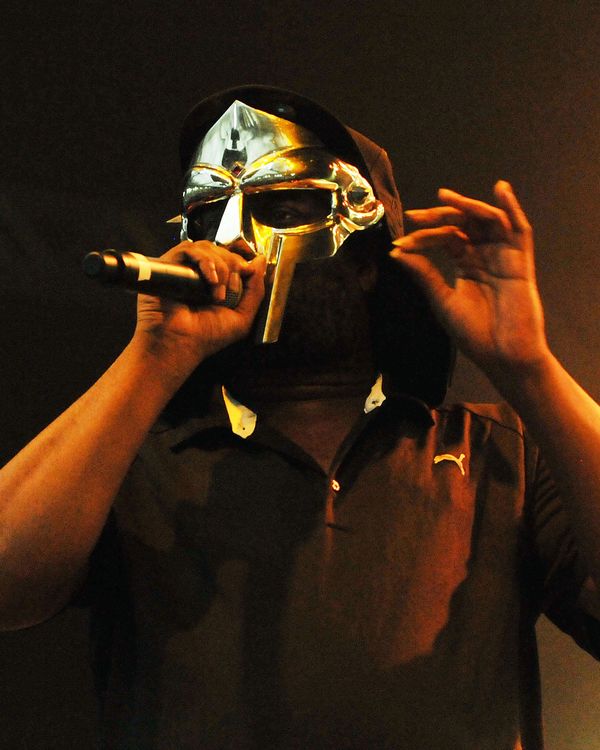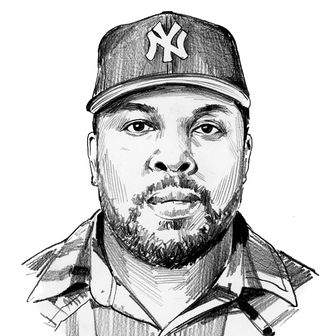
The most memorable villains possess not only terrifying power but also complex motives. In Star Wars, Darth Vader’s path to darkness is driven as much by the allure of the fantastical abilities he gets out of it as by the belief that these powers are the key to his family’s survival. X-Men’s Magneto loses faith in the goodness of humankind and becomes a mutant supremacist, having seen the worst we’re capable of as a German Jewish youth left to die in Hitler’s Polish death camps and later (after he escapes and his powers manifest) when a fearful, hateful mob murders his daughter while trying to purge the city of mutants. Doctor Doom, one of Marvel’s most intriguing big bads, dons his chilling metal mask after burning his face in an experiment gone wrong: He attempts to break into hell and steal the soul of his mother, a witch who cut a deal with the Devil for the power to save her people from a ruthless authoritarian leader but who died in the struggle and is cursed to eternal torment as payment for her request. The mask is a monument to pain and a promise to protect a people no matter the cost; Doom’s moves, cruel as they are, are rooted in a kind of cracked altruism. He shares his mother’s willingness to uplift his people by any means necessary.
The deeper you get into the lore, the more it makes sense for Daniel Dumile — the underground hip-hop titan whose sudden passing on October 31 at age 49 wasn’t announced to the world until the last day of 2020 — to feel a kinship with the Doctor. The rapper wore the mask for similar reasons. As members of the New York City rap trio K.M.D., Daniel and his younger brother Dingilizwe funneled years spent studying hip-hop music and culture into 1991’s Mr. Hood, an imperfect if promising debut (that is, in retrospect, all too often remembered through the lens of the developments that would follow, rather than on its own merits, much like the Fugees’ Blunted on Reality), which positioned the group as keepers of the flame of the darkly playful boom bap that had come together for groups like De La Soul and A Tribe Called Quest as the icy, programmed beats of the ’80s gave way to the layered, unpredictable sampling of the ’90s. (On Mr. Hood, you’re just as likely to encounter swatches of Sesame Street scenes as Malcolm X speeches.) The album sold just enough for legendary A&R rep Dante Ross to petition Elektra Records to foot the bill for a second K.M.D. album. In the new music, the Dumile brothers hewed darker, doubling down on social justice informed by their Black Muslim upbringing. But weeks before the album’s completion, Dingilizwe died, struck by a car while crossing an expressway on Long Island. And Elektra got cold feet about releasing K.M.D.’s sophomore effort, Black Bastards, being shaken by the cover art — on which the Sambo figure that had graced Mr. Hood’s cover was lynched in lurid detail — and the fear of a repeat of the national outrage that Ice-T’s “Cop Killer” had sparked in 1992. They let Dumile walk with his masters.
As with any captivating villain’s origin story, the exact details after that point differ a little with each telling, but the common threads are as follows: Terrified major labels treated Black Bastards like radioactive waste, functionally ending Dumile’s shot at a mainstream music career. Money and shelter were hard to come by over the next few years. In the late ’90s, Dumile reemerged, face covered, as MF DOOM, at first playing open-mic nights at Manhattan’s Nuyorican Poets Cafe — tape of the first of these exists thanks to New York hip-hop veteran Geng — and later recording for Rock Steady Crew member and WKCR legend Bobbito Garcia’s Fondle ’Em Records imprint, home to a small but impressive collection of releases from gifted rhymers like Kool Keith, the Juggaknots, Siah, and Yeshua. Operation: Doomsday, the 1999 debut MF DOOM album, promised to “destroy rap” in the first five minutes and did a notable job of pissing all over the precepts of mainstream hip-hop. The sample loops were messy, inspired, insouciant approaches to beloved standards. “Rhymes Like Dimes” chopped up session player Greg Phillinganes’s unforgettable solo on Quincy Jones and James Ingram’s “One Hundred Ways” as DOOM served drug metaphors and sex jokes. On “Doomsday,” he juxtaposed musings on death with melodies from Sade’s “Kiss of Life.”
The sense that DOOM had mastered rhyme and production but lacked interest in carrying out either in the traditional ways would hang over his next decade of offbeat, unpredictable solo and collaborative projects. Wearing a mask and speaking in the third person, DOOM wasn’t just playing around with golden-age comic book tropes; he was calling into question the relationship between identity and image in hip-hop at a time when artists were spending millions of dollars to look cool and asking the listenership to believe they lived every story they told. DOOM was the antithesis of the expensive disco-hit remakes and loud couture of the shiny-suit era into which Operation: Doomsday was released, warping the familiar and making it sound debased and crude while beat-makers like Diddy wore the sonics of the recent past like jewelry, such was the expense of procuring samples of well-known source material. In an era when clarity and simplicity were the keys to a hit record, DOOM dealt in riddles fans would unpack for years. You could luxuriate in the surface-level trappings for a lifetime, studying the interplay between ’60s horror and comic-book references, ’70s and ’80s soul music, and intricate New York City lore, or you could listen past it and commiserate with the hard living and loving that DOOM’s beats and puns gave cover for. This made his music a refuge for heads disillusioned by the pomp and polish of commercial turn-of-the-millennium rap as well as a gateway for new listeners lacking the lived experience to see their reflection in the stuff on the charts. DOOM bridged audiences, styles, and artists.
In his collaborative work, DOOM shared the spotlight with a constellation of underground stars. His songs with Manhattan-based Cuban and Puerto Rican rhymer Kurious endure — see Doomsday’s “?,” Take Me to Your Leader’s “Fastlane,” and “Benetton” from Kurious’s II. Unicron, the EP DOOM produced for San Francisco rapper Trunks, is underrated heat. Linking up with elusive West Coast rapper and beatsmith Madlib, DOOM scored (another) one of the greatest rap albums of all time, using curt, linear, impactful narratives to effect the speed and locomotion of hard-core punk on 2004’s Madvillainy. What’s true of the rest of the villain’s catalogue holds here: Assumptions are subverted at every turn. There’s heaviness in the chill moments and levity in places you’d least expect it. The kernel of sadness in the weed anthem “America’s Most Blunted” (“DOOM nominated for the best rolled L’s / And they wonder how he dealt with stress so well / Wild guess: You could say he stay sedated / Some say buddha’d, some say faded”) gives the impression that a song ostensibly about blazing is really about coping. You may think “Fancy Clown” is a beam of hurt directed at an ex and her new lover until you clock that what’s really going on is DOOM using his Viktor Vaughn alias to roast himself: “You wasn’t sorry when you sucked him off in the hallway / But have it your way: raw, no foreplay / That’s you if you want a dude who wear a mask all day.”
As the world caught up to DOOM’s strange ways, admirers from unexpected places came around. Thom Yorke, from Radiohead, and Four Tet were fans and eventual collaborators. Damon Albarn’s cartoon band Gorillaz, itself an offshoot of underground hip-hop (its 2001 self-titled debut album shares a producer with Kool Keith’s Dr. Octagonecologyst and Del tha Funkee Homosapien’s Deltron 3030), tapped DOOM to guest on the Demon Days highlight “November Has Come.” The latter led to a full-length album with Danger Mouse, who produced the Gorillaz record, and the stars of Cartoon Network’s madcap late-night animation block Adult Swim, on which DOOM’s working knowledge of weird American cartoons dovetailed with the jibing nostalgia and iconoclasm of titles like Sealab 2021 and Harvey Birdman, Attorney at Law. The relationship put DOOM on television — both as a recurring character on the show Perfect Hair Forever and as a presence in memorable bumps like 2006’s “Christmas With MF DOOM” series — and in the line of sight of whatever kids and stoners stayed up to watch. That visibility, as much as the potency of his catalogue, would seed DOOM’s ideas in a new generation of hip-hop stars. Listening to the music of Odd Future, Joey Bada$$, Griselda Records, and any entity that treasures offbeat boom bap and off-kilter timing, you can trace ideas back through Metal Face records and DOOM beats. Where other legends might have rested on their laurels and legacy, DOOM spent as much of the 2010s on dream-team pairings with the likes of Flying Lotus and Ghostface Killah as on growing the profile of the young New York prodigy Bishop Nehru.
DOOM took the scenic route to recognition and earned a place in the annals of history on his own terms, but it’s hard to see this as a happy ending, because as much as his story is one of subverting the accepted wisdom about compromising your artistry to increase its reach, it is also about how America treats immigrants who contribute to the richness of our culture, who give much of themselves and ask very little of the government but can’t get a fair shake. DOOM was raised on Long Island after being born in London in 1971 to parents from Zimbabwe and Trinidad. (In 2012, he told SPIN they’d been merely passing through.) This became an issue in 2010 when he stepped out to tour Europe behind 2009’s Born Like This and learned that he had been barred from reentering the country where he’d spent most of his life, a cruel side effect of a nation tightening its borders in the wake of 9/11.
DOOM changed the face of American music and never got to play another concert Stateside, a kiss just as cold as the rug being pulled out from under K.M.D. because a writer who’d never heard the record decided Black Bastards was incendiary material. So as we mourn the man, it behooves us to speak not just to his greatness but also to the closed-mindedness and cruelty that complicated his life and necessitated his dark turn. The villain made do; let’s stop making villains.





